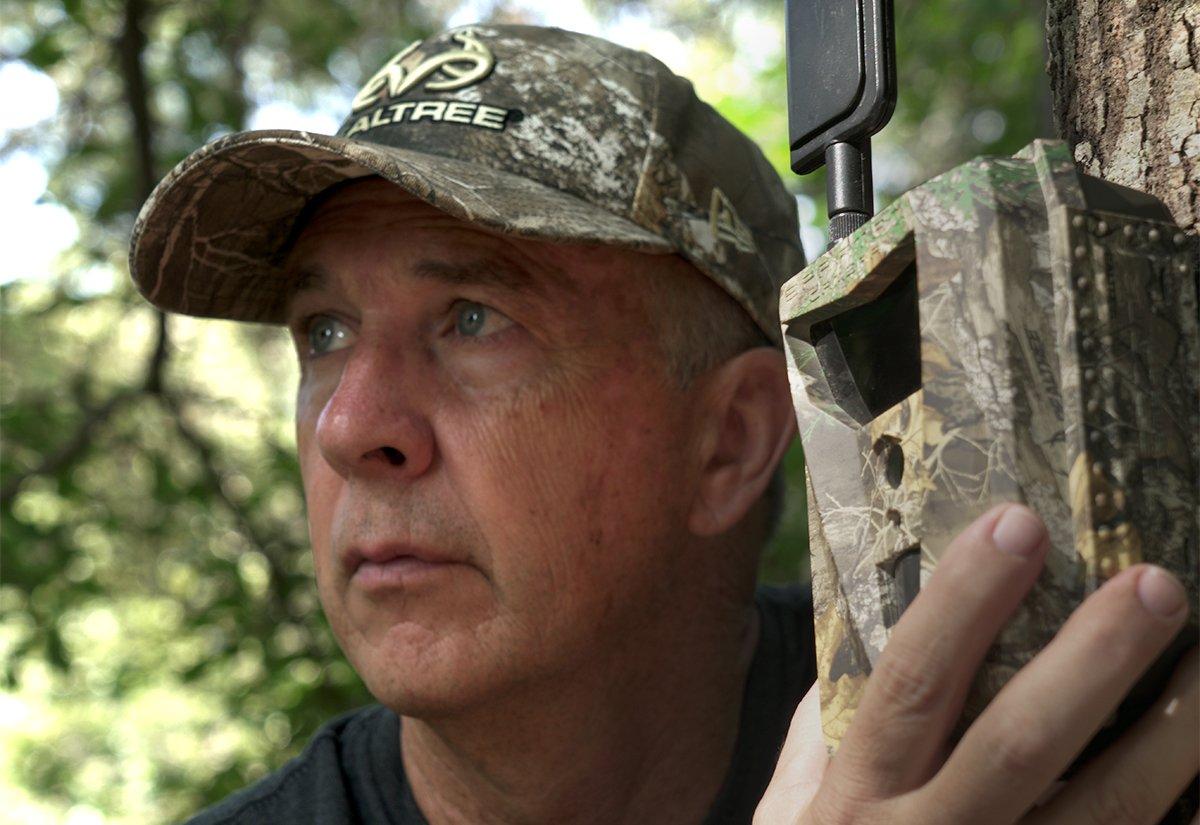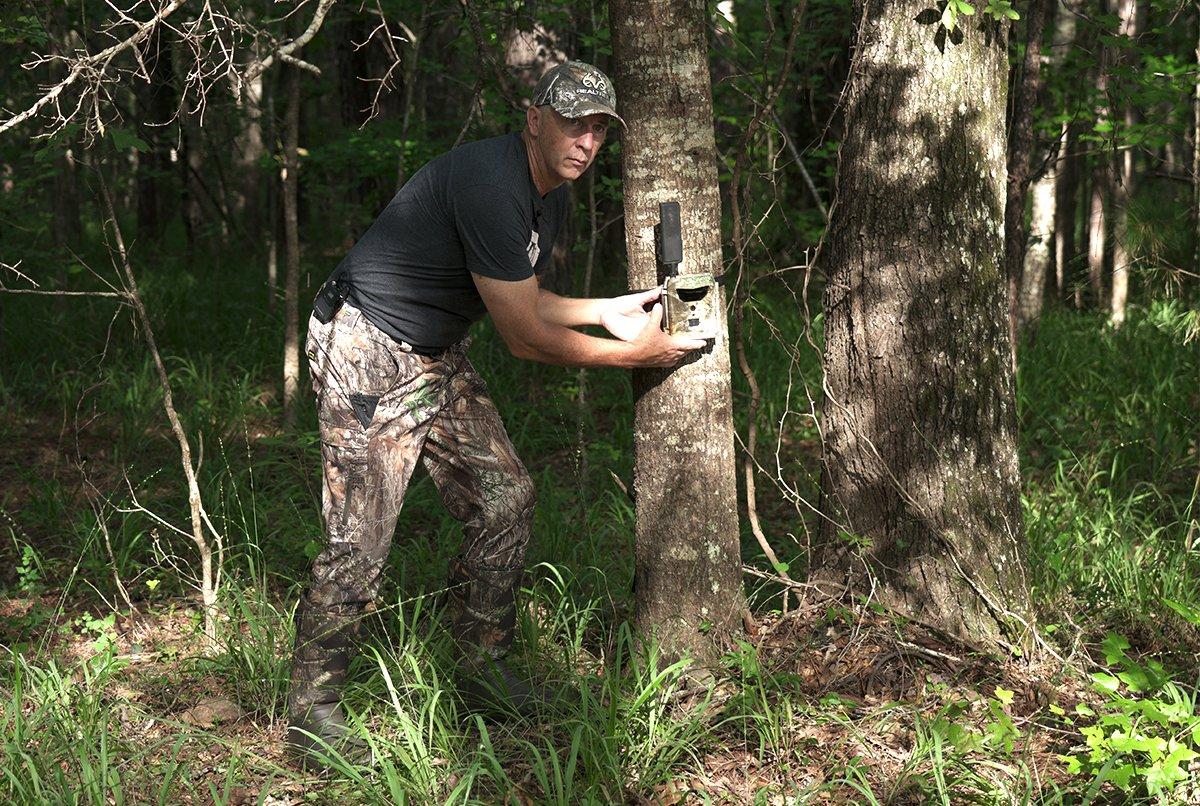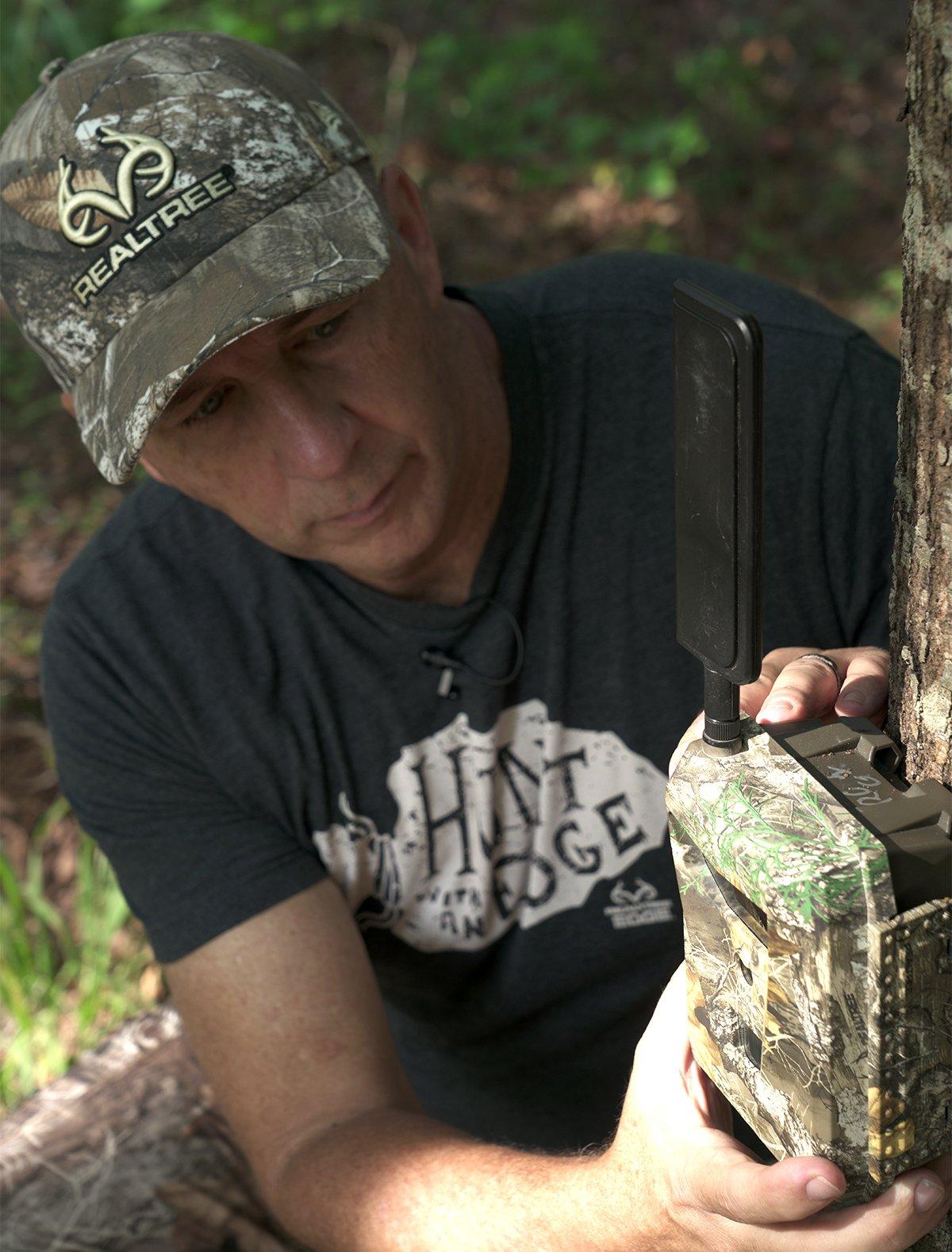How to power, where to set, and how to monitor your cameras in the lazy days leading up to bow season
Some hunters might not like summer, but I think it's an exciting season, mainly because of the information and entertainment I enjoy while running trail cameras. The process is pure fun, letting me savor the woods during the off-season and glimpse deer and other wildlife in their natural habitat. Moreover, the images my Spartan cameras capture let me take inventory of deer populations and fawn recruitment, and reveal which bucks made it through winter. I can also determine which bucks made jumps in antler growth and have become shooters instead of just promising up-and-comers.
But as with any outdoors pursuit, running trail cams during summer requires forethought and preparation. Here's how I approach it.
Setup Secrets
Prepping my Spartan cameras for action is somewhat like getting your bow ready for archery season. You must make sure it's tuned and in good operating order before hitting the woods.
The first thing I do when readying my cameras is replace all the cards, if possible. Further, I make sure my cards are compatible with my cameras — a step some folks overlook. Modern cameras are extremely sophisticated, and some elementary SD cards available at cheaper prices are not intended to run with such high-tech equipment. This seemingly minor step is critical, as there's nothing more frustrating than setting your cameras and then realizing later that they're not taking pictures or transmitting images.
I also load fresh batteries into all my cameras — another obvious but important step. Don't assume that batteries from the previous season retained their charge, even if your camera has been on a shelf indoors since January. I've also learned that it pays to spend a little extra money and run lithium batteries, which last longer.
External batteries are a great choice if your situation and budget allow. These can be especially effective in areas with high deer densities, where your cameras will likely take and transmit lots of photos. If you go with an external battery, protect your power cord with some type of varmint-proof material, as rats, possums, raccoons, and squirrels are notorious for chewing cords in half.
(Don't Miss: Why and How to Scout Summer Scrapes)
In the Woods
When my Spartans are ready for action, I analyze placement options. Typically, I concentrate my cameras on field edges and open country, as summer bachelor groups of bucks usually browse and feed in and around fields — especially ag plots with crops such as corn and soybeans. This pattern remains very predictable throughout summer.
In states that allow the use of bait or attractants — Kansas, for example — it's easier to concentrate deer near cameras to obtain inventory. Some outfitters in such states place two piles of attractant about 40 go 50 yards apart and run a camera at each. Sometimes, a dominant buck favors one pile and won't let other bucks feed there. However, other bucks can congregate at the second feeding area, allowing you to obtain images of them.
Pay attention to details when placing your cameras. If you're using cellular cams, make sure that spot has a sufficiently strong cell signal for your camera to send images. If not, the camera will figuratively spin its wheels trying to transmit pictures, without snapping new images in the interim.
Troubleshoot obstructions near your cameras. Take down brush or limbs that might blow in the wind and trigger your cameras, filling your cards with useless images. Likewise, avoid setting cameras in areas with tall grass or other vegetation that might move in a breeze.
Also, consider your camera's placement in relation to the rising or setting sun, and avoid angles where the camera might catch the full force of blinding sunlight. This isn't as critical in summer, but it becomes increasingly important as autumn nears and the sun shifts toward the southern portion of the sky.
In addition, be creative when placing cameras. If you want to set a camera in an area without many good trees, drive an old fence post or stake into the ground, and place your camera on it. Or, if ground cover becomes an issue, place your cameras higher and angle them downward, using a stick, bark, or something similar to lock the angle in place. Just make sure to get a test picture before leaving.
One final note: Before placing cameras, check state regulations about the use of game cameras. Some states have modified rules about where and how long hunters can use cameras, and it's a fluid situation. Make sure you're on the right side of the law before placing any devices.
(Don't Miss: 3 Killer Summer Trail Camera Tactics)
Gathering Intelligence
Many of today's trail cameras transmit images to a device such as your phone or laptop, eliminating the need to constantly check cameras and pull cards. This option really appeals to me, as I'm old-school and hate to disturb an area and possibly alert deer to my presence.
I only pull SD cards from cameras about every other week to minimize my impact. I always wear my Lacrosse boots and avoid walking in areas with waist-high grass or similar cover so I don't leave scent throughout the woods. And it doesn't hurt to use some type of no-scent spray to reduce or eliminate human odor from surfaces, such as the camera body. As the season approaches, I pay close attention to the wind direction and avoid checking cameras if the breeze might blow my scent toward possible buck bedding areas. Also, I avoid driving my truck to sites if I think it runs the risk of spooking deer.
If you're checking cameras near bait or attractant stations, be aware of snakes. Feeding sites attract many animals, which in turn attracts rattlers and other creepy-crawlers. Folks have killed a lot of rattlesnakes near corn piles while checking cameras. Be on guard.
When analyzing summer camera images, consider your goals for a property. Folks who manage for quality and are trying to improve the age structure of their buck herd look to identify mature deer, and that can be difficult if you cannot recognize individual bucks from previous seasons. Identifying deer that you photographed one or two years ago can let you know which bucks added substantial antler growth. In many areas of the country, this occurs when deer reach 5.5 years old. In some areas, however, it might happen when they hit 6.5 years old. Be careful, though. In summer, even mature deer have substantially smaller necks than during fall, so an old brute might look like a younger buck.
(Don't Miss: The 4 Best Spots to Hang Summertime Trail Cameras)
Conclusion
Many of you probably already have your Spartan cameras in action, capturing images of your local herd. If not, get them out there and start enjoying the process. Gazing at piles of big-buck pictures is worthwhile in itself, but it becomes especially enjoyable when those images let you piece together the puzzle and bring home one of those quality bucks.










